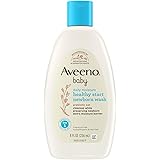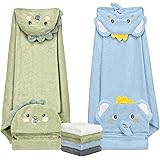Watching Emma in her latest adventure with her Cry Baby Dolls is a delightful reminder of the simple joys and profound lessons embedded in childhood pretend play. For many young children, the world of make-believe isn’t just fun; it’s a vital training ground for life. If your child is constantly looking for engaging ways to play and learn, or if you’re seeking to understand the significant benefits of role-playing scenarios like pretend play babysitting, then you’ve come to the right place. This post delves deeper into the magical world of imaginative play, expanding on the wonderful activities demonstrated by Emma and her baby dolls.
The challenge for children is often translating their observations of adult life into their own understandable experiences. The solution lies in creative play, where they can safely explore new roles and responsibilities. Emma’s video beautifully illustrates how a simple nursery playset can transform into a bustling learning environment, fostering crucial developmental skills.
The Enchanting World of Pretend Play Babysitting
The act of babysitting, even if it’s for a collection of beloved baby dolls, offers a rich tapestry of learning opportunities. It’s an exercise in empathy, patience, and problem-solving that directly contributes to a child’s social and emotional growth. When children engage in pretend play babysitting, they’re not just mimicking adults; they’re actively constructing their understanding of the world around them.
1. Nurturing Natures: Learning to Care for Baby Dolls
One of the most evident benefits of this type of play is the development of nurturing skills. As Emma demonstrates throughout her day, caring for her baby dolls involves a range of activities that mirror real-life parenting or caregiving. These actions help children to:
- Develop Empathy: Understanding that others (even dolls) have needs and feelings.
- Practice Responsibility: Taking charge of another being’s well-being.
- Enhance Communication: Talking to the dolls, singing to them, and explaining actions.
- Build Patience: Waiting for the doll to ‘finish’ its milk or ‘fall asleep.’
In Emma’s scenario, when a baby doll cries because it’s hungry or can’t sleep, Emma actively thinks about what to do. This process is invaluable for a child’s cognitive development, encouraging them to think critically and come up with solutions.
2. Mastering Routines: Bedtime, Mealtime, and Playtime
Children thrive on routine, and pretend play is an excellent way to reinforce these concepts in a fun, non-stressful environment. Emma’s day with her baby dolls highlights several key routines:
Bedtime Stories and Soothing Songs
When the first baby doll struggled to sleep, Emma tried singing “Brother John” and later used a spinning toy as a calming mechanism. This reflects how children learn different soothing techniques. Later, she soothed another doll with “Twinkle, Twinkle, Little Star” after giving it a pacifier. These actions teach children about establishing calming rituals and the power of gentle reassurance.
Parents can encourage this by introducing various lullabies or simple stories during their child’s own bedtime, showing them how these acts of comfort can be replicated in their play.
Imaginative Feeding Time with Toy Food
The second baby doll’s cry for food sets off another mini-adventure. Emma first offers milk, then later realizes she needs more food toys. This highlights the practical aspect of understanding hunger and providing sustenance. When Emma eventually acquires her strawberries, cereal, and yogurt food toys, she reinforces the idea of offering choices and meeting a doll’s needs. The careful act of washing hands before feeding also subtly introduces hygiene lessons.
These scenarios help children understand the importance of nutrition and the process of preparing and offering food, all within a safe, imaginative context.
Creative Play and Problem-Solving
After finishing her milk, one baby doll wants to play, but Emma has homework. This creates a realistic dilemma, and Emma’s solution of providing the doll with a train and a cookie toy to play by itself demonstrates creative problem-solving and setting boundaries. Children learn that sometimes others need to be entertained independently, fostering a sense of independence in their dolls and themselves.
Beyond the Playroom: Real-World Lessons from Pretend Play
The video isn’t just about playing with baby dolls; it subtly weaves in crucial life lessons that resonate with both children and parents.
3. Responsibility First: The Homework Imperative
A poignant moment occurs when Emma’s uncle reminds her about her homework. This brief interaction beautifully underscores the importance of balancing play with responsibilities. Emma’s immediate pivot from play to academics, followed by her proud announcement of completing her homework, serves as an excellent example for young viewers.
This storyline teaches children that duties often come before leisure, and completing tasks like homework can then allow for guilt-free playtime. It’s a fundamental lesson in self-discipline and time management that begins even in early childhood.
4. The Toy Store Adventure: Learning About Choices and Value
When Emma needed more food toys, the trip to Uncle John’s toy store was more than just a shopping spree. This scene introduces several real-world concepts:
- Making Choices: Emma thoughtfully selects strawberries, cereal, and yogurt.
- Understanding Transactions: The “ten dollar” price and the exchange of money teach basic financial literacy.
- Gratitude: Emma and the baby doll both thank Uncle John, reinforcing good manners.
- Value of Items: The two extra spoons given by Uncle John add a touch of generosity and utility to the purchase.
This entire sequence is a mini-lesson in consumerism and social interaction, preparing children for similar experiences in their own lives.
5. Hygiene and Maintenance: The Dirty Towel
Even small details like the dirty towel highlight practical life skills. When the baby doll apologizes for making the towel dirty, Emma’s reassuring response and subsequent act of washing and hanging it up teach children about:
- Taking Ownership: The doll’s apology models acknowledging a mistake.
- Problem-Solving: Emma knows she needs to clean the towel.
- Basic Chores: Washing and drying laundry, even if it’s just a doll’s towel, introduces the concept of keeping things clean and tidy.
These small acts within pretend play babysitting contribute to a child’s overall understanding of household responsibilities and personal care.
Creating Your Own Engaging Nursery Playset Experience
Inspired by Emma’s video, you can encourage your child’s own pretend play babysitting adventures. Here are some tips:
- Gather Essential Props: A few baby dolls, toy bottles, blankets, a small pretend crib or box, and simple toy food items are a great start. Emma’s nursery playset is a fantastic example of a dedicated space.
- Introduce Routines: Talk about bedtime, feeding, and changing routines as your child plays. Use language like, “Time to give the baby some milk,” or “Let’s sing a lullaby for our sleepy doll.”
- Encourage Problem-Solving: When a doll ‘cries,’ ask your child, “Why do you think the baby is crying? What can we do to help?”
- Incorporate Real-Life Scenarios: Just like Emma’s homework, introduce simple “real-world” challenges into their play, like needing to clean up before a ‘playdate’ or going on a pretend shopping trip for doll clothes.
- Join In Briefly: Participate to model behaviors or introduce new ideas, but then allow your child to lead the play.
The beauty of pretend play babysitting with baby dolls is its open-ended nature. It allows children to explore, experiment, and learn at their own pace, transforming everyday moments into extraordinary adventures in growth and development.











